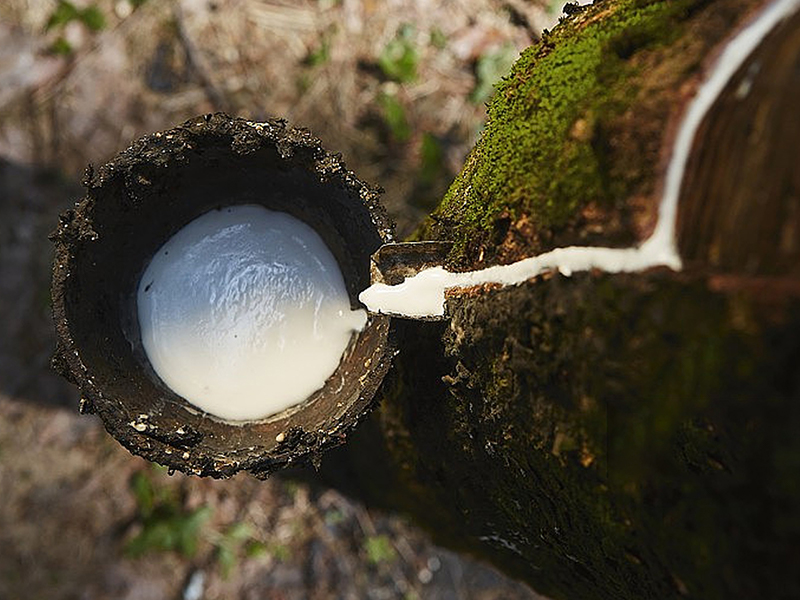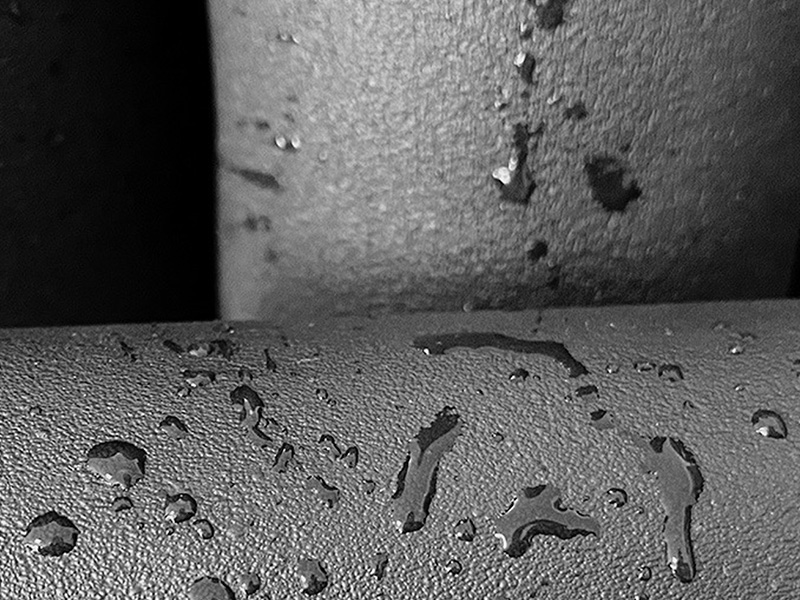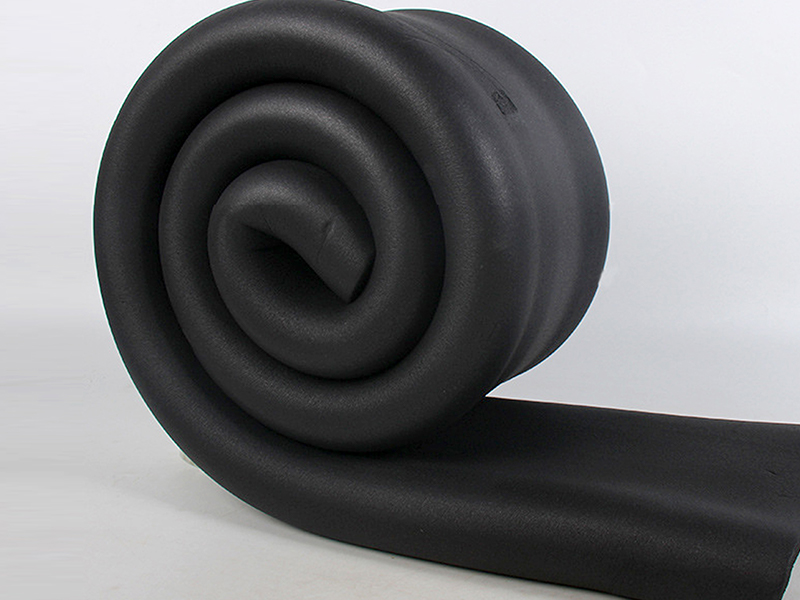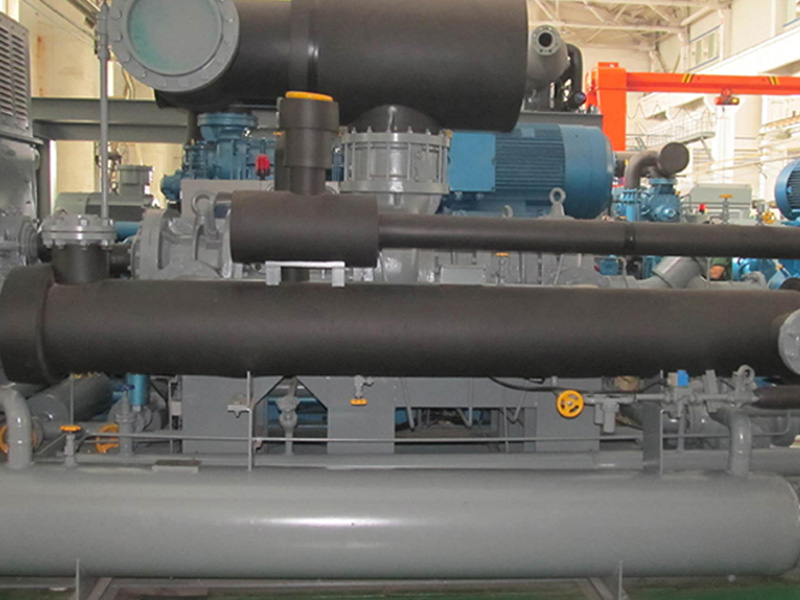What is Natural Rubber?
Natural rubber is derived from the latex of rubber trees, primarily the Hevea brasiliensis species, found in tropical regions like Southeast Asia. The extraction process involves tapping the trees to collect latex, which is then processed into raw rubber. This type of rubber is known for its unique elasticity, resilience, and high tensile strength. It is often considered a "renewable" resource due to its natural origins and biodegradability, which makes it more environmentally friendly compared to synthetic alternatives. Natural rubber is particularly valued in industries where durability and flexibility are essential, such as automotive tires, medical devices, and industrial seals.
Despite its benefits, natural rubber has some limitations. Its performance can be influenced by external factors like temperature and weather conditions. Additionally, its production process is heavily reliant on specific climates and geographic regions, making it susceptible to fluctuations in supply. As a result, the price of natural rubber can vary significantly based on crop yields, weather patterns, and other environmental factors. These factors contribute to the growing interest in
synthetic rubber as an alternative in various applications.
What is Synthetic Rubber?
Synthetic rubber, on the other hand, is a man-made material created through the polymerization of monomers derived from petroleum-based chemicals. Unlike natural rubber, synthetic rubber doesn't rely on plant sources, making it a more versatile option for various applications. The primary advantage of synthetic rubber lies in its ability to be tailored to specific requirements. Manufacturers can modify the polymer structure during production to enhance characteristics like heat resistance, oil resistance, and durability, making synthetic rubber highly adaptable for a wide range of industries.
The most common types of synthetic rubber include styrene-butadiene rubber (SBR), nitrile rubber (NBR), and butyl rubber (IIR), each designed to meet particular needs. For instance, nitrile rubber is widely used for applications requiring oil resistance, while styrene-butadiene is commonly found in tires due to its balance of cost-effectiveness and performance. Despite being less biodegradable than natural rubber, synthetic rubber offers greater consistency in performance and can be produced in large quantities. However, its production has an environmental impact due to the reliance on fossil fuels, raising concerns about its sustainability in the long term.
Natural Rubber vs Synthetic Rubber: Key Differences
When comparing natural rubber vs synthetic rubber, several factors come into play, including the source, composition, properties, and environmental impact. Let's break down these key differences in detail:
Source
Natural rubber is harvested from the latex of rubber trees, while synthetic rubber is derived from petrochemical compounds. This means natural rubber is a renewable resource, whereas synthetic rubber relies on finite oil reserves. The geographic location of rubber plantations, primarily in tropical regions, limits the availability of natural rubber, making it more vulnerable to environmental factors such as drought or disease. In contrast, synthetic rubber can be produced in various locations globally, ensuring a more consistent and reliable supply chain.
Composition
Natural rubber is primarily composed of polyisoprene, a polymer that provides elasticity and flexibility. Its chemical structure allows it to stretch and return to its original shape without losing its strength. Synthetic rubber, however, consists of a variety of polymer types, each designed to meet specific performance characteristics. For example,
nitrile rubber (NBR) is oil-resistant, while
butyl rubber (IIR) is known for its airtight properties. These variations give synthetic rubber an edge when customization is required for specific applications.
Performance
Natural rubber has excellent tensile strength, resilience, and elongation at break, which makes it ideal for applications that require high flexibility and durability. However, it can be less resistant to weathering, ozone, and certain chemicals, which limits its use in harsh environments. Synthetic rubber, on the other hand, is highly customizable in terms of chemical resistance, temperature tolerance, and wear resistance.
Oil resistant synthetic rubber's oil-resistant properties make it ideal for automotive and industrial applications, where exposure to lubricants or fuels is common.
Longevity
While natural rubber has great elasticity, its lifespan can be affected by environmental conditions. Factors like heat, light, and ozone can degrade natural rubber over time, reducing its effectiveness in applications such as seals and gaskets. Synthetic rubber, especially variants like
nitrile pvc rubber and EPDM, can be engineered to withstand extreme temperatures, oils, and chemicals, giving it a longer service life in demanding applications.
Applications
Natural rubber is most commonly used in tires, medical products, footwear, and rubber bands due to its high flexibility and comfort. Synthetic rubber, due to its adaptability, is used in a wider array of industries, including automotive, construction, and electronics. Synthetic rubber is preferred in products that require resistance to oils, heat, or harsh chemicals, such as
nbr seal material, gaskets, and hoses.
Price
Generally, synthetic rubber is cheaper to produce than natural rubber, primarily due to the lower cost of petroleum-based raw materials and the ability to manufacture it on a large scale. However, the price of synthetic rubber can fluctuate based on crude oil prices. Natural rubber, while more expensive due to its cultivation and harvesting processes, has a price that can be influenced by factors such as crop yields and geopolitical instability in producing countries.
Environmental Impact
Natural rubber is considered more eco-friendly because it is biodegradable and sourced from renewable resources. However, the large-scale monoculture plantations required for rubber production can lead to deforestation and loss of biodiversity. Synthetic rubber, while not biodegradable, can be recycled and repurposed in some instances. Additionally, manufacturers are increasingly investing in more sustainable
synthetic rubber manufacturing process, such as using bio-based feedstocks to reduce environmental impact.
What are the Different Types of Synthetic Rubber?
Synthetic rubber comes in a variety of types, each with unique properties designed to meet specific performance requirements. The most common types of synthetic rubber include:
-
Styrene-Butadiene Rubber (SBR): The most widely used synthetic rubber, SBR is cost-effective and provides a good balance of performance and durability. It is commonly used in tire manufacturing, shoe soles, and gaskets. SBR’s strength lies in its wear resistance and flexibility.
-
-
Nitrile Rubber (NBR):
Nitrile synthetic rubber is known for its excellent oil and fuel resistance, making it ideal for automotive and industrial applications. NBR is commonly used in seals, hoses, gaskets, and O-rings that come into contact with oils, solvents, and fuels.
-
-
Butyl Rubber (IIR): Butyl rubber is recognized for its air impermeability and resistance to weathering, ozone, and chemicals. This makes it ideal for applications like inner tubes, weather seals, and pharmaceutical stoppers.
-
-
Ethylene Propylene Diene Monomer (EPDM): EPDM rubber has excellent resistance to heat, ozone, and weathering, making it ideal for use in outdoor and high-temperature environments, such as roofing membranes and automotive seals.
-
-
Neoprene (CR): Neoprene is known for its resistance to oil, chemicals, and extreme temperatures. It is widely used in wetsuits, seals, and protective gloves.
How to Choose Between Natural and Synthetic Rubber?
Choosing between natural and synthetic rubber depends on several factors, including the intended application, performance requirements, cost, and environmental considerations. Here’s a closer look at how to make an informed decision:
-
Performance Requirements: If the application demands high flexibility, resilience, and durability, natural rubber might be the best choice. However, if the product needs resistance to oils, extreme temperatures, or chemicals, synthetic rubber types like
a nitrile butadiene rubber or neoprene would be more suitable.
-
-
Environmental Impact: For applications where biodegradability and sustainability are important, natural rubber is generally the better choice. However, advancements in synthetic rubber manufacturing processes are helping reduce the environmental footprint of synthetic options.
-
-
Cost Efficiency: Synthetic rubber often offers a more cost-effective
foam insulation solution, especially for large-scale production, as it can be manufactured more easily and with fewer fluctuations in price.
-
The Future of Natural Rubber and Synthetic Rubber
The future of both natural and synthetic rubber lies in sustainability and technological innovation. For natural rubber, the focus is on improving the efficiency of cultivation and reducing the environmental impact of rubber plantations. Initiatives are being taken to adopt more sustainable farming practices and mitigate deforestation risks associated with rubber production.
For synthetic rubber, the emphasis is on reducing its reliance on petroleum-based materials and developing more sustainable production processes. Innovations in bio-based synthetic rubbers and recycling methods are already underway, with the goal of reducing waste and improving the material's overall environmental footprint. Furthermore, as industries continue to develop new applications for rubber, both natural and synthetic varieties are likely to evolve to meet the demands of the 21st century.
FUNAS: Leading Synthetic Rubber Supplier
FUNAS is a leading
synthetic rubber supplier of high-quality synthetic rubber products, specializing in
custom cut foam rubber solutions. We offer a wide range of foam rubber for sale, including options tailored to meet the unique needs of various industries. Whether you're looking for custom dimensions, specific performance characteristics, or specialized coatings, FUNAS can provide the perfect solution. Additionally, we are a trusted wholesale nitrile rubber supplier, offering products designed for durability, oil resistance, and versatility in demanding applications. Our commitment to excellence ensures that every product meets the highest standards of quality and performance, making us the go-to choice for businesses seeking reliable,
custom rubber sheet solutions.
Conclusion
In summary, the choice between natural and synthetic rubber depends largely on the unique needs of each application. While natural rubber is valued for its exceptional elasticity and renewability, synthetic rubber stands out for its customization potential, durability, and adaptability to challenging environments. As both industries continue to innovate, advancements in manufacturing and sustainability are set to improve the performance and eco-friendliness of rubber products. FUNAS, a leading
synthetic rubber factory, plays a key role in these advancements, providing high-quality synthetic rubber solutions tailored to specific industry needs. With synthetic rubber prices designed to offer value without compromising on quality, FUNAS ensures that clients receive durable, cost-effective
synthetic rubber oil resistant products ideal for a range of applications, from automotive to industrial uses.
FAQs
1. Why is synthetic rubber cheaper than natural rubber?
Synthetic rubber is generally cheaper than natural rubber because it is produced through industrial processes that are less dependent on natural resources, making it more cost-effective to manufacture. Additionally, synthetic rubber can be produced in large quantities, reducing overall production costs.
2. How does synthetic rubber perform in extreme temperatures?
Synthetic rubber is highly versatile and can be formulated to perform well in extreme temperatures, with specific types offering resistance to both high heat and freezing conditions. This makes it ideal for applications in harsh environments, such as automotive or industrial settings.
3. Are there alternatives to both natural and synthetic rubber?
Yes, there are several alternatives to both natural and synthetic rubber, including materials like thermoplastic elastomers (TPE) and polyurethane, which offer specific performance characteristics such as higher flexibility or improved environmental sustainability. These alternatives can be used depending on the particular application needs.































































